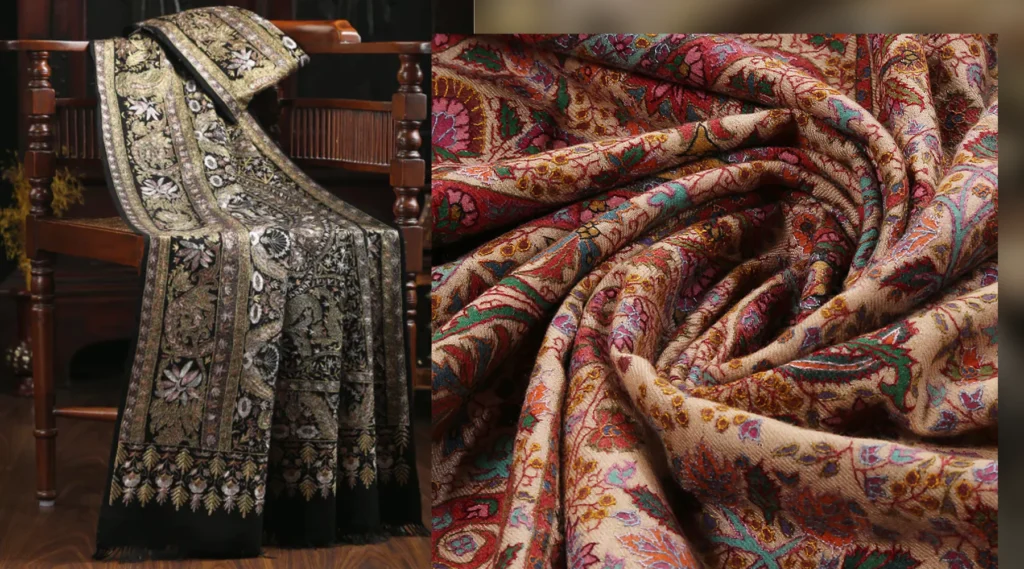From the opulent courts of ancient civilizations to the modern runways of Paris and Milan, the shawls has endured as a symbol of timeless elegance and cultural significance. This iconic garment transcends mere fashion, weaving together threads of history, tradition, and craftsmanship. In this exploration, we delve into the rich tapestry of the shawl’s journey through time, tracing its evolution from practical garment to coveted accessory, and uncovering the myriad cultural influences that have shaped its enduring allure.
Origins
The origins of the shawl can be traced back thousands of years, with early iterations found in various forms across cultures and civilizations. In ancient Mesopotamia, for example, fragments of woven fabric resembling shawls have been discovered, hinting at their presence in the cradle of civilization. Similarly, depictions of draped garments reminiscent of shawls adorn the walls of ancient Egyptian tombs, suggesting their use in ritualistic and ceremonial contexts.
The Shawl in Ancient Civilizations
In many ancient cultures, the shawl held profound symbolic significance, representing notions of protection, fertility, and status. Among the ancient Greeks, for instance, the himation—a large rectangular cloth draped over the body—served as a versatile garment worn by both men and women. Beyond its practical function as a protective layer against the elements, the himation also conveyed social status and cultural identity, with variations in fabric, color, and draping style reflecting individual preferences and regional customs.
The Influence of the Silk Road
The advent of the Silk Road in the ancient world facilitated the exchange of goods, ideas, and cultures across vast distances, fostering a global tapestry of trade and innovation. Central to this exchange were textiles, including luxurious fabrics such as silk, cashmere, and wool, which were highly sought after for their quality and craftsmanship. Among the most coveted textiles to traverse the Silk Road were shawls, prized for their exquisite designs and intricate weaving techniques.
The Kashmiri Shawl
One of the most renowned varieties of shawl to emerge from the Silk Road trade was the Kashmiri shawl, celebrated for its unparalleled craftsmanship and artistic beauty. Woven from the finest cashmere wool and intricately embroidered with exquisite patterns, Kashmiri shawls became treasured heirlooms passed down through generations. The art of Kashmiri shawl-making reached its zenith during the Mughal era, when emperors and nobility adorned themselves with these exquisite garments as symbols of wealth and prestige.
The Shawl in European Fashion
By the 18th century, the allure of exotic imports from the East had captured the imagination of Europe’s elite, igniting a craze for Oriental fashion and décor. Shawls, with their intricate designs and luxurious fabrics, became coveted symbols of status and sophistication among the fashionable elite. The rise of European textile manufacturing further fueled the popularity of shawls, enabling broader access to these once-exclusive garments.
The Shawl in Art and Literature
Throughout history, the shawl has captivated the imaginations of artists, writers, and poets, who have immortalized its beauty in works of art and literature. From the romantic landscapes of Caspar David Friedrich to the lyrical verses of Lord Byron, the shawl has been woven into the fabric of cultural expression, symbolizing themes of love, longing, and nostalgia. In literature, iconic heroines such as Jane Eyre and Catherine Earnshaw are often depicted wearing shawls, their graceful drapery evoking an aura of mystery and allure.
Revival and Reinvention
In the 20th and 21st centuries, the shawl experienced a revival in fashion, propelled by a resurgence of interest in traditional craftsmanship and artisanal techniques. Designers began incorporating shawl-inspired elements into their collections, reimagining this timeless accessory for contemporary tastes. From the bohemian chic of the 1960s to the minimalist aesthetic of the present day, the shawl has remained a versatile and enduring staple of the modern wardrobe.
Cultural Significance
Beyond its aesthetic appeal, the shawl continues to hold deep cultural significance for many communities around the world. In regions such as South Asia, the Middle East, and Latin America, shawls are woven into the fabric of daily life, serving as markers of identity, tradition, and heritage. Whether worn as part of traditional attire or adapted for modern fashion, the shawl remains a tangible link to the past, connecting generations and preserving cultural legacies.
Conclusion
The shawl stands as a testament to the enduring power of tradition, craftsmanship, and cultural exchange. From its ancient origins to its modern-day revival, this iconic garment has transcended time and geography, weaving together the diverse threads of human history and creativity. As we wrap ourselves in the timeless elegance of the shawl, we become part of a living tapestry, where the past intertwines with the present, and beauty knows no bounds.







